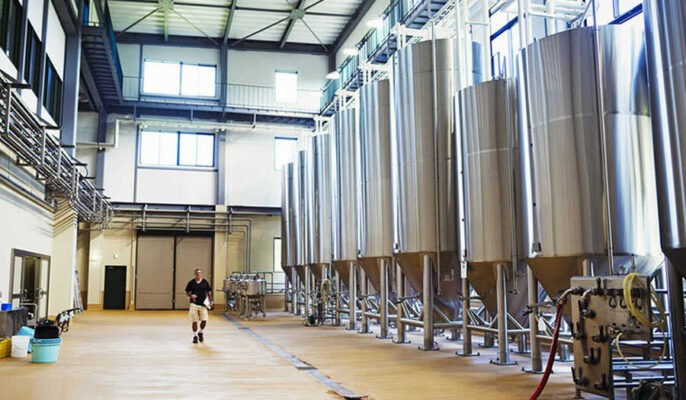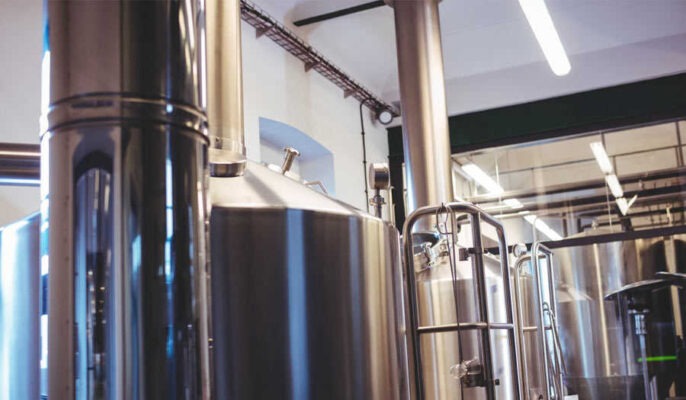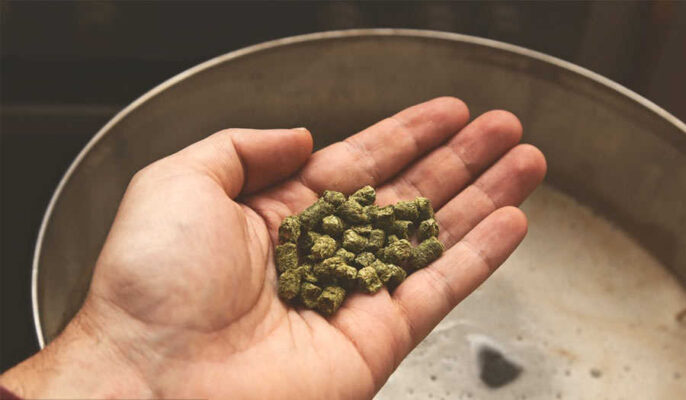Since the world of beer is so vast, any bar has an incredible variety of alcoholic beverages. The art and science of brewing have evolved over centuries, resulting in a wealth of flavors and styles to suit different consumer preferences. Craft breweries and large breweries are the two major players in the beer industry, each with its own unique approach to the brewing process.
What is a craft brewery?
A craft brewery is a smaller brewery that focuses on innovation and experimentation when it comes to beer. A craft brewery brews no more than 2 million gallons of beer per year and is owned.
Craft breweries also often market their beers as premium products with unique flavors that no other brewery can offer.

What is a large brewery?
Large-scale breweries with annual beer production between 15,000 and 6,000,000 barrels. Usually produced in high volumes and distributed.
Different brewing ingredients
Craft beer is brewed using only malt, hops, yeast and water. No artificial additives added. It has a higher malt content and more hops than industrial beer. Thus, the brewed wort has a higher concentration.
Industrial beer is also brewed with malt, hops, yeast and water. But sometimes in pursuit of cost, rice, corn, starch and other raw materials are used instead of malt. The beer brewed in this way has a very low wort concentration and a light taste.
Different milling methods
Craft breweries often start by grinding malted grain in-house. This involves grinding the grains to break up the husk and expose the starchy endosperm. The coarseness of the grind can be adjusted batch by batch to affect the character of the beer.
Because of the scale of their operations, large breweries often buy pre-ground grain. This ensures consistent granularity and efficiency, in line with their focus on standardized production.
Different brewhouse
Craft breweries take a hands-on approach to mashing. They mix the ground grains with hot water in a mash tun to allow enzymes to convert the starches into fermentable sugars. Temperature rests can be controlled to get specific malt characteristics.
Larger breweries use automated mash systems to control temperature and blending. This consistency helps achieve the desired sugar extraction and simplifies large-scale operations.

Boiling is not the same as adding hops
Craft brewers love the flexibility of adding hops at various stages in the boil. It can range from bitter hops added early on to aromatic hops added later, resulting in a complex flavor profile.
Larger breweries use automated hop metering systems to ensure consistent hop use and bitterness from batch to batch. The focus here is on efficiency and consistency.
Fermentation
A craft brewery may opt for open fermentation, where the beer is exposed to air. Or choose a specific yeast strain to impart a unique flavor. Temperature control is more manual to allow for experimentation.
Closed fermentation vessels are common in large breweries. Precise temperature control and hygiene are essential to ensure even fermentation and avoid contamination.
Different fermentation process
The fermentation process of craft beer and ordinary industrial beer is also different. The craft beer adopts the Ales process (top fermentation process). Industrial beer adopts the Larges process (lower fermentation process). The difference between the two processes is the location of the yeast during fermentation.
Most craft beers use the ale process. Yeast works on the top of the fermenter, floating above the liquor. The fermentation temperature is generally controlled at 10-20°C. Fermentation tanks are usually small. No filtration or sterilization is required after fermentation.
Most industrial beers use the lager process. Yeast works at the bottom of the fermenter, sinking below the liquor. The fermentation temperature is generally controlled below 10°C. The fermenter is larger. After fermentation, filtration and pasteurization are usually employed.
Maturity
Craft beers undergo a longer maturation period (sometimes in barrels) to develop complex flavours. This patient approach helps develop a nuanced flavor profile.
Larger breweries are speeding up their turnarounds, following strict production schedules. The maturing process is shorter and usually takes place in large stainless steel tanks to meet demand.
Storage time is different
Most craft beers are not filtered and pasteurized. Thus, craft beer is not very durable. The shelf life is short. Some have a shelf life of only ten days.
Industrial beer will be filtered and pasteurized for a longer shelf life. The shelf life of general industrial beer is 1-2 years, and some can even be as long as several decades.

Different packaging
A craft brewery may opt for a manual or semi-automatic bottling, canning or keg process.
Large breweries use automated bottling, canning and keg lines to package beer and . The focus is on mass production and wide distribution.
Different ways of drinking
When brewing craft beer, it is more particular. Industrial beers are not that special.
Craft beer usually has a stronger taste and higher alcohol content, which is suitable for tasting .
Industrial beer is usually lighter in taste and lower in alcohol content, making it suitable for drinking in large swigs.
In conclusion
Craft breweries and large breweries embody different philosophies, with craft breweries embracing manual experimentation and large breweries emphasizing efficiency and consistency. While each approach produces unique tastes and experiences, both contribute to a vibrant and diverse world of beer that delights consumers around the globe.





You should take part in a contest for one of the greatest blogs on the web. I most certainly will recommend this website!